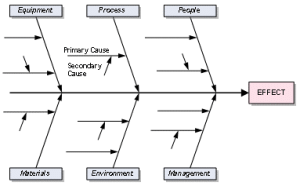A recent survey found that one of the top frustrations of CEOs is aligning strategy and people. This was interesting to me because of the amount of research and experience available to companies about strategy, change management, employee engagement, etc. Moreover, aren’t companies meant to move an idea or strategy from the abstract to concrete reality by way of their employees?
I was curious to see what made aligning strategy and people so difficult even today. To find out, I interviewed some colleagues in Human Resources, and here are the top three challenges that emerged from our conversations:
1. Top leadership was removed from the day-to-day realities of the business.
A common impediment cited when aligning strategy and people was that senior and executive management remained separated from the reality of frontline employees during both the planning and implementation stages of initiatives. That is, top leaders often built a strategy and an implementation plan on untested assumptions and inadequate information (which caused initiatives to fall short or fizzle), mostly because they did not get vital information from employees who did the work. This, of course, lead to allocating misguided or inadequate resources and setting inadequate or unrealistic goals and milestones.
Also, by remaining removed from what was happening near the point of customer contact, employees didn’t see the strategy or tactics as realistic, which in turn made senior management lose credibility. Further, by remaining distant from the frontline realities, top leadership didn’t act as role models for everyone else. Instead, they seemed to take a “do what we say, not as we do” attitude by imposing their perspectives and plans on employees as they directed the work from afar. Thus, employees viewed senior leadership as avoiding accountability and passing the buck, which led to employee resentment that undermined employee engagement and, ultimately, the initiative itself.
2. The organization fails to intentionally prioritize and align strategy, vision, goals, and daily work
Another challenge that came up was a lack of shared understanding of how to translate strategy and goals into actionable tasks and behaviors that would make the desired difference. Often, top leaders assume that once goals were communicated to each respective area of the company, the people would automatically know what to do to get the desired results. Each successive layer of leadership throughout the organization provided little guidance throughout the organization about how employees needed to adjust and redirect their focus, energy, and targets. Further, many companies failed to prioritize how and where to deploy resources at various stages throughout implementation. This created confusion around the cadence and priority of work among departments, divisions and teams.
Instead, when implementation began, it became painfully clear to those performing the work where different areas of the organization stepped on each other’s toes, were working at cross-purposes, or were pursuing uncoordinated outcomes. The end results were internal conflict around competing interests between departments and divisions, confused communication, and even resentment between areas.
3. The organization lacks shared values and behavior norms.
Another reason that for the conundrum of aligning strategy and people was that the organization had not intentionally identified, defined, and prioritize its values. This meant there were few if any norms for how people were expected to work together. Without shared values and norms, each company area and each individual substituted their own values or their own interpretations of company values as they performed their work, made decisions, and interacted with each other. For example, one department valued creating profits for shareholders over everything else, even though that was not a primary goal of the initiative. This caused confusion and resentment as the one department worked at cross purposes with other departments. In other words, without shared values and norms, misinterpretations and miscommunication occurred frequently, leading to mistrust between different areas of the organization.
To conclude, in the 21st century, CEOs still struggle with aligning strategy and people, which goes to the heart of what leadership is all about. To do it better, most in leadership positions need to focus on what others in the organization need from them. First, senior leaders and executives to engage with employees at all levels of the organization to inform the strategy and implementation and remain engaged as role models throughout. Next, senior leadership must intentionally and clearly translate the strategy into current priorities and monitor and adjust those priorities throughout the initiative being mindful of and helping to resolve competing interests along the way. Finally, top leadership must foster an intentional, common culture that defines and reinforces a common language and common value-based behaviors to enhance collaboration.
WANT TO USE THIS IN YOUR NEWSLETTER, BLOG OR WEBSITE? You can, as long as you include this information with it: Beth Strathman works with executives and senior leaders to create team environments that optimize ownership, accountability, learning, and results. Learn more at bethstrathman.com.


 Creating a strategic plan is such an accomplishment. After all, you spend tons of time, energy, and money going through the planning process. However, the work has just begun. Now, as the rubber meets the road, things can easily fall apart. Many employees will resist changing what they have always done. Yet, others will be excited at the prospect of going in a different direction. If, as part of your strategic plan, you don’t have a specific plan to execute your strategy, you will be a very unpopular leader.
Creating a strategic plan is such an accomplishment. After all, you spend tons of time, energy, and money going through the planning process. However, the work has just begun. Now, as the rubber meets the road, things can easily fall apart. Many employees will resist changing what they have always done. Yet, others will be excited at the prospect of going in a different direction. If, as part of your strategic plan, you don’t have a specific plan to execute your strategy, you will be a very unpopular leader.

 Colette Herrick, is an executive coach, strategic facilitator and CEO of Insight Shift, a Utah-based firm since 2002. The overarching aim of her work is to support leaders, teams and organizations to innovate collaborative solutions, accelerate results, and experience greater fulfillment.
Colette Herrick, is an executive coach, strategic facilitator and CEO of Insight Shift, a Utah-based firm since 2002. The overarching aim of her work is to support leaders, teams and organizations to innovate collaborative solutions, accelerate results, and experience greater fulfillment. We are educated. We are modern human beings. We make decisions every day. How inaccurate and incomplete can our thinking be?
We are educated. We are modern human beings. We make decisions every day. How inaccurate and incomplete can our thinking be?

 The world moves so quickly these days, it feels hard to keep up. With the proliferation of available information, you can trick yourself into believing that you need to keep up with all information and happenings. However, it isn’t simply paying attention to everything that’s going on that makes you productive and valuable; it’s staying intentionally attuned to the things you’ve identified as important and relevant to your business that keeps you productive and on target.
The world moves so quickly these days, it feels hard to keep up. With the proliferation of available information, you can trick yourself into believing that you need to keep up with all information and happenings. However, it isn’t simply paying attention to everything that’s going on that makes you productive and valuable; it’s staying intentionally attuned to the things you’ve identified as important and relevant to your business that keeps you productive and on target.